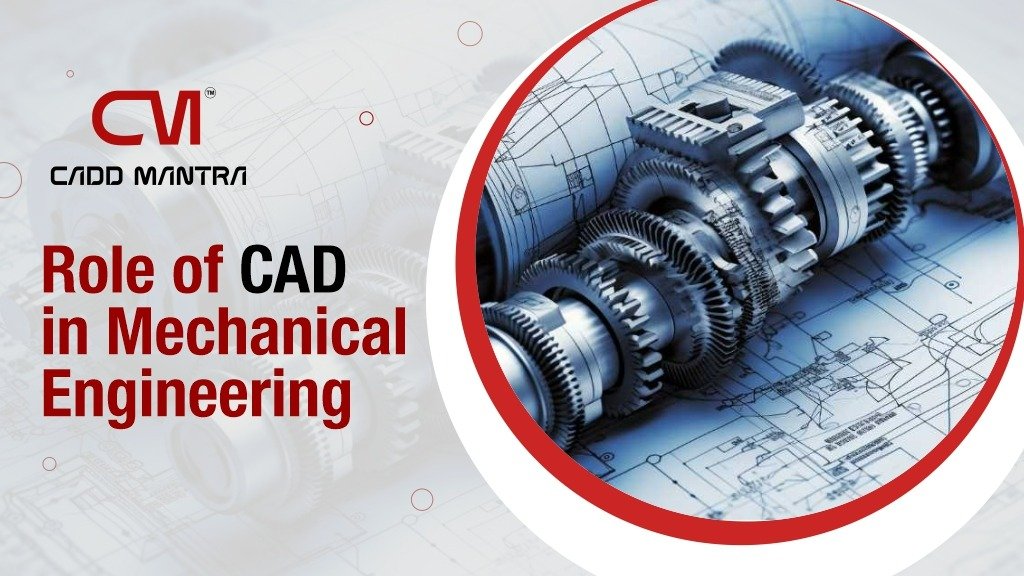Imagine designing a complex machine with absolute precision, testing it virtually, and resolving errors, all before building a physical prototype. Sounds futuristic? Not anymore. Computer-Aided Design (CAD) has revolutionized the way mechanical engineers work, enabling them to create, refine, and execute designs seamlessly. But how exactly does CAD fit into the mechanical engineering landscape? Let’s break it down.
What is CAD in Mechanical Engineering?
CAD, or Computer-Aided Design, is more than just a tool; it’s a cornerstone of modern engineering. It allows engineers to create detailed 2D and 3D designs, simulate real-world conditions, and optimize processes. From automating repetitive tasks to enhancing collaboration, CAD in mechanical engineering has transformed every stage of the design and manufacturing lifecycle.
Key Mechanical Engineering CAD Tools You Should Know
Every engineer relies on tools, and in the digital age, CAD software reigns supreme. Here are some must-know mechanical engineering CAD tools that dominate the industry:
- AutoCAD: The industry standard for 2D and 3D drafting, perfect for beginners and professionals alike.
- SolidWorks: A favorite for its intuitive interface and advanced simulation capabilities.
- CATIA: Trusted for handling intricate designs, particularly in the aerospace and automotive sectors.
- ANSYS: A powerhouse for virtual testing and analysis, ensuring designs can withstand real-world challenges.
Each of these tools equips engineers with the precision and efficiency needed to innovate and excel in today’s fast-paced world.
Benefits of CAD Drafting in Engineering
The shift from manual drafting to CAD drafting in engineering wasn’t just a convenience—it was a game-changer. Here’s why:
1. Unmatched Precision
With CAD, every line, curve, and dimension is exact. This eliminates human error and ensures that designs meet the most rigorous standards.
2. Improved Efficiency
Gone are the days of redoing entire drawings. CAD tools offer features like copy-paste, templates, and design libraries that save countless hours.
3. Better Collaboration
CAD files can be easily shared and edited by teams across locations, fostering seamless collaboration.
4. Cost Savings
Virtual simulations allow engineers to identify potential flaws early, saving costs on physical prototypes and revisions.
5. Enhanced Creativity
By automating tedious tasks, CAD frees up time for engineers to focus on innovation and problem-solving.
Whether you’re working on a small component or a large industrial system, the benefits of CAD drafting in engineering are undeniable.
Real-Life Applications of CAD in Mechanical Engineering
CAD isn’t just about creating blueprints; it’s about bringing ideas to life. Here’s how it’s used across industries:
- Automotive Engineering: Designing engines, gear systems, and entire vehicles with precision.
- Aerospace: Crafting complex components that must meet exacting safety standards.
- Manufacturing: From CNC machining to 3D printing, CAD models guide production processes.
- Consumer Goods: Designing ergonomic, aesthetically pleasing products for everyday use.
In essence, CAD is the driving force behind many of the innovations we see today.
The Future of CAD in Mechanical Engineering
As technology evolves, so does CAD. With advancements in Artificial Intelligence (AI) and Machine Learning (ML), CAD tools are becoming smarter. Imagine software that suggests design improvements or predicts potential failures, t’s not as far off as you think.
Additionally, cloud-based CAD platforms are gaining popularity, allowing engineers to work from anywhere and collaborate in real-time.
Why Master CAD? The Competitive Edge
In a world where time is money and precision is critical, knowing how to use CAD effectively is a non-negotiable skill for mechanical engineers. Whether you’re designing for automotive, aerospace, or consumer products, CAD tools give you a significant edge in the competitive job market.
Start Your CAD Journey with Expert Training
If you’re ready to dive into the world of CAD, professional training is the best place to start. At CADD Mantra, our specialized Mechanical CAD courses equip you with the knowledge and hands-on skills to excel in the field. Learn how to use tools like AutoCAD, SolidWorks, and more while understanding their practical applications in mechanical engineering.
CAD—Your Key to Innovation in Mechanical Engineering
CAD is not just a tool; it’s a revolution that empowers engineers to dream big, design smarter, and deliver better results. If you’re looking to enhance your career and stay ahead of industry demands, mastering CAD is your next step.
Ready to take the leap? Enroll in our Mechanical CAD course at CADD Mantra today and unlock your potential.









